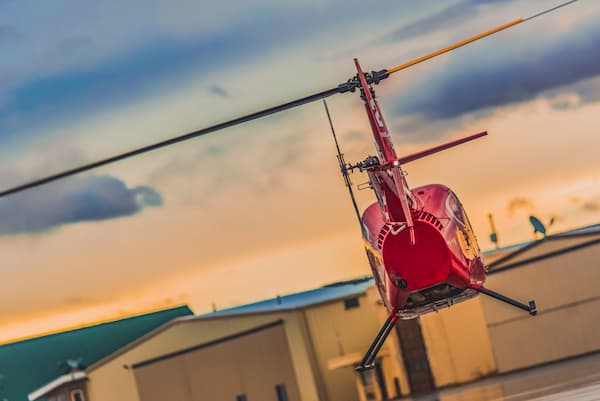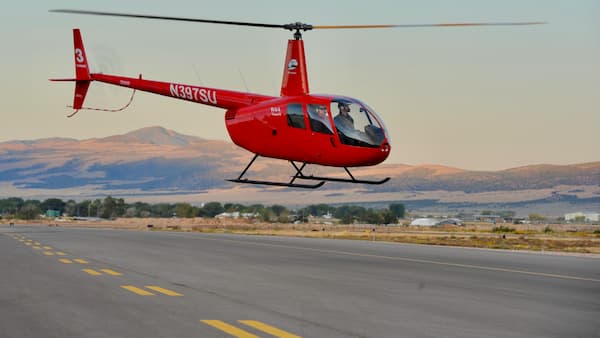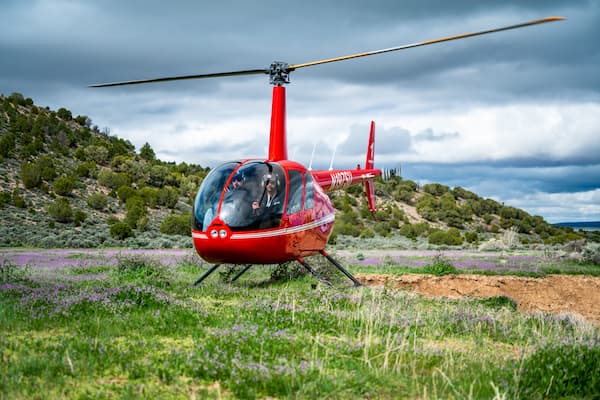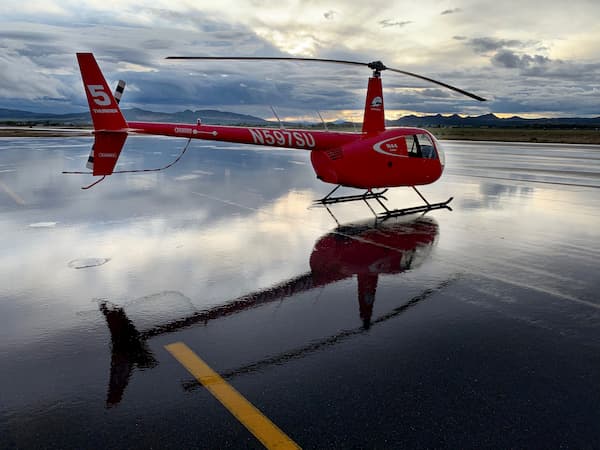Is It Difficult to Fly Helicopters
Posted: August 03, 2020 | Author: Jaidyn Crookston | Read Time: 5 minutes
 Is it difficult to fly a helicopter? Yes, helicopters are difficult to fly. BUT it's really only difficult at first. After learning and practicing the maneuvers and with experience, flying helicopters becomes like riding a bike, manageable and instinctive.
Is it difficult to fly a helicopter? Yes, helicopters are difficult to fly. BUT it's really only difficult at first. After learning and practicing the maneuvers and with experience, flying helicopters becomes like riding a bike, manageable and instinctive.
At first, flying a helicopter can take some getting used to. Helicopters respond to very slight movements of the wrist and foot, and it takes some time to realize just how small movements should be when controlling the large machine. It’s really helpful to start off on the flight simulator to get used to the tiny moves, but a real helicopter is still different enough that you’re very likely to overcompensate at the beginning and feel as though you’re constantly adjusting controls and swinging back and forth. Once you begin making small control inputs and learn how the helicopter responds, flying the aircraft will become much easier.

One of the most difficult helicopter maneuvers is hovering and it's often one of the first things a flight student is taught to do. Learning to hover can take a while, up to a couple of hours, but once a student learns to hover, he or she can move on to learn more advanced techniques. Because hovering is the first thing taught, it can often seem more difficult than anything that comes after it.
Another important maneuver to learn is an autorotation. An autorotation is for if a helicopter engine stops running. By doing an autoration, a pilot can still safely return to the ground even with no external power. This can be a scary maneuver for even experienced pilots, but with enough practice, anyone can do it safely. Students learn an autoration first on the flight simulator and then, once comfortable with the process, on a real helicopter.
There are lots of difficult helicopter maneuvers, especially when starting out as a student and not fully knowing what the copter is capable of doing. At first, these maneuvers will be difficult and scary, but once you’ve practiced them and know exactly what you’re doing, everything will come naturally and you’ll be able to perform the maneuvers with your eyes closed.

Outside factors that make learning to fly a challenge
There are some training environments and conditions beyond the actual helicopter that may make it more difficult to learn to fly.
High Altitude
It’s harder to fly helicopters in a high altitude environment because of the high density altitude. This means that the higher above sea level you are, the more difficult it will be to fly. If you attend a flight school located at a high altitude, it may be a bit harder to fly, but you’ll be better prepared and more experienced than someone who learned to fly at a low altitude. If you can fly at a high altitude, you can fly anywhere.
Those that learn to fly at high altitudes have a better chance of getting a job once they earn their certifications because the employer will know that they can fly at any altitude. The highest altitude collegiate flight school in the nation is Southern Utah University Aviation, which sits at 5,622 feet above sea level.
Weather Conditions
Weather conditions also determine how difficult it is to fly a helicopter. Pilots that learn to fly in a location that is always sunny with little to no wind, aren’t very prepared for the real world of flying through snow, hail, rain, and strong wind. Many helicopter jobs require pilots to work no matter the weather, like search and rescue, emergency services, and border patrol. Unless you have experience flying in poor weather conditions, it will be more difficult to get these jobs.
It’s extremely beneficial to find a flight school that sees all sorts of weather. For example, SUU Aviation is located in Cedar City, UT, and Cedar City gets rain, snow, wind, hail, and sun all throughout the year. You never know what the weather will be like from day to day, which is great for flight training.
Instrument Flying
It’s important to earn an instrument rating if you want to work as a helicopter pilot, but flying a helicopter only using the instruments makes flying much harder. Getting an instrument rating qualifies pilots to fly when visibility is compromised, such as during fog or rain. During training, students wear partially darkened glasses so they can't see outside the cockpit but can still look down at the instrument panel. They learn to fly using only this instrument panel. Obviously, it’s much more difficult to fly this way, but it’s necessary to work as a helicopter pilot and be paid. As a pilot, you never know when you’ll need to use this training while flying in the field.
 Helicopter
Helicopter
Which helicopter you’re flying also helps determine how difficult it will be to fly. Many flight schools use R22s for flight training because they’re cheaper. However, it’s actually easier and safer to fly in an R44. R44’s are heavier, making them more stable in windy conditions. It’s also easier to learn to hover and do an autorotation in an R44. Most industry companies don’t use R22s anymore, so learning to fly them isn’t very helpful for a future career and you’ll need to be trained on an R44 anyway. If you can train at a flight school that uses an R44, you’ll be much better prepared to work as a pilot.
It’s important to be as marketable to employers as possible. By learning to fly in a high-density environment with diverse weather conditions, you’ll be much more marketable as a pilot. If you’ve learned to fly on an R44 and have your instrument rating, you’ll be even more marketable and should easily be able to find a job as a pilot.
SUU Aviation is the highest altitude collegiate flight school in the nation and has very diverse weather conditions year-round. As a flight student, you’ll earn all the certifications you need to work as a pilot, including your instrument rating, all while flying in an R44, Bell 206, or Bell 505. If you have any questions about the program, contact SUU Aviation.
Produced by SUU Aviation
Southern Utah University offers training in Rotor Wing Pilot (helicopter) or Fixed Wing Pilot (airplane) components. These tracks share a common core of general education and general aviation core courses. Our specialized flight labs, located at the Cedar City, Utah Airport (CDC), include state-of-the-art aircraft that will get you off the ground in no time.
This article was published more than 3 years ago and might contain outdated information or broken links. As a result, its accuracy cannot be guaranteed.
Tags: Aviation

